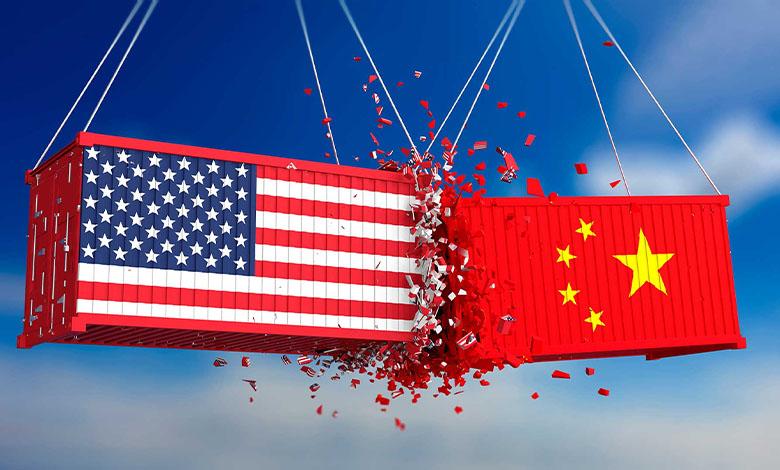Industrial shock: how the trade war between the USA and China paralyzed production in the Celestial Empire

The trade war between the US and China, started by Donald Trump, is strong hit across many Chinese factories. Manufacturers of electronics, clothing, cars, toys and household goods were the most affected.
How US Tariffs Paralyzed Chinese Manufacturing of Electronics, Clothing and Toys
Under the greatest impact found herself electronics. Last year, Podnebesna sold 185 billion dollars worth of electronic goods in the United States. This is approximately 41% of all electronic goods that the US imports from abroad. But because of the new tariffs, US prices for Chinese electronics jumped 26-45%, which instantly reduced demand.
Textiles and clothing were also badly affected. China sent $68 billion worth of goods to the US, which accounted for about 28% of US imports in this area. Many orders were simply canceled due to high tariffs. Factories in the Chinese provinces of Guangdong and Fujian have started stop production and send people on unpaid leave.
Another example is toys. More than 2/3 of all toys in the US before produced precisely in China. But the new tariffs made Chinese toys more expensive, so many factories either cut production or put workers on long unpaid leaves.
Mechanical engineering and the production of machinery were also hit. China sold $89 billion worth of machinery and equipment, but now businesses have to search new clients or reduce the volume of work.
Furniture and household goods did not last either. They accounted for more than $30 billion of Chinese exports to the U.S., but after the tariffs were imposed, U.S. buyers began to look to other suppliers in Vietnam and Mexico.
Because of all this, many Chinese workers have lost their jobs or are getting less money. Yes, DeHong Electrical Products factory in Dongguan sent all employees on a month’s leave with minimum wage due to reduced orders.
Shenzhen and Dongguan, major manufacturing cities, have already begun to support exporters: they provide subsidies for participation in international exhibitions and insurance for canceled orders. But experts say that the crisis is long-lasting. As Han Dongfang of the China Labor Bulletin explained, China is facing a long and difficult process of manufacturing restructuring, and many people will lose their jobs.
China is trying to retaliate against the US with its own tariffs, but is doing so cautiously. Despite Trump’s statement of willingness to negotiate, Beijing not in a hurry go to contact
In search of new markets: how Chinese factories are recovering from the blow of a trade war with the United States
Due to the trade war with the US, many Chinese factories are forced to change their plans. In order not to lose profits due to high American tariffs, manufacturers are actively looking for new markets and moving production to other countries.
Many companies choose Vietnam, Indonesia and India. Yes, Huaqin, which makes electronics for Samsung, OPPO and Xiaomi, already transferred part of the capacity to Vietnam and Indonesia to fulfill orders for America from there. In India itself, the company works only for the local market, which allows it to avoid American tariffs.
Another example is the electric car manufacturer BYD. They invest in new factories in Vietnam, in particular, they are building a modern complex in Phu Tho province, where they plan to produce “green” products.
In addition to moving production, Chinese companies are actively looking for new buyers in different parts of the world. Car manufacturer Chery already has 10 factories outside China and sells machines in more than 80 countries, including South America, the Middle East and Africa.
OPPO is active in the smartphone segment develops sales in Europe and Latin America. They are opening new factories outside of China to be closer to consumers and less dependent on the American market.
In China itself, the government is trying to support manufacturers: for example, Shenzhen and Dongguan offer subsidies to participate in foreign exhibitions and insure against the risks of canceled orders. But even with such help, many factories forced to stop production or reduce the number of shifts due to a sharp reduction in orders from the US.
China’s bailout: How Beijing is supporting business amid a trade war with the US
To help factories survive the trade war with the US, Chinese authorities have launched a series of support programs.
First of all, the government provides subsidies and tax breaks to companies affected by high tariffs. Most help manufacturers of electronics and electric vehicles – they are given financial support to continue working even in difficult conditions.
In addition, state banks, in particular, the Export-Import Bank of China, give soft loans to businesses, and Sinosure offers insurance for exporters so they don’t have to worry about losing money due to canceled orders.
To reduce dependence on the United States, China began to actively stimulate the domestic market. Power encourages companies to sell more goods at home: organize special fairs, develop online trade through platforms such as JD.com and Meituan.
At the same time, the government is investing in infrastructure, in particular, in the construction of charging stations for electric cars. It helps create new jobs and support domestic demand for technology.
Another important step is the expansion of export insurance. China helps business to enter new markets, especially in Africa, the Middle East and Southeast Asia, to compensate for the loss of American orders.
Particular attention is paid to the development of innovations. Government through special funds like the Big Fund invests large investments in the production of chips, AI and other technologies of the future.
Small and medium-sized companies were also not left without support: they offer loans and grants for the development of new projects and modernization of production.
The price of a trade war: unemployment, strikes and labor migration in Chinese factories
Factory shutdowns in China have made life difficult for many workers. People remain unemployed, receive less money and are forced to look for new opportunities in other cities.
Many factories simply close. So, at the Yangzhou Baoyi Shoe Factory, which produced goods for Nike, more than a thousand workers came out on strike because they were not offered compensation after the closure of the enterprise.
Those factories that are still operating often delay or reduce wages. Many workers had several months of delays in payments, which forced them go out of protests.
In addition, due to economic difficulties, many businesses no longer offer permanent contracts. People are hired through agencies for temporary work, with no guarantee of long-term employment. It does workers even more vulnerable.
Due to all these problems, the number of strikes is increasing. Last year in China became much more protests in factories than in previous years.
Another consequence is that people are forced to go to other regions to look for work. With factory shutdowns in traditional industrial centers, more and more workers are looking for better opportunities are moving to other cities.
…Next time we will look at how the introduction of new tariffs by the US has hit Chinese manufacturers. How the sharp drop in imports of Chinese goods to the US caused global supply disruptions, commodity shortages and rising prices in the world, why the role of Vietnam, Mexico and India in the US market has increased dramatically, and why the idea of setting up production directly in the US turned out to be economically unprofitable. Separately, we will talk about how China is trying to use the crisis to rebuild the economy through the strategy of “dual circulation”, why the development of the domestic market faces serious difficulties, and why even in the case of political agreements, the trade and technological rivalry between the United States and China will remain for a long time.
Tetyana Viktorova





